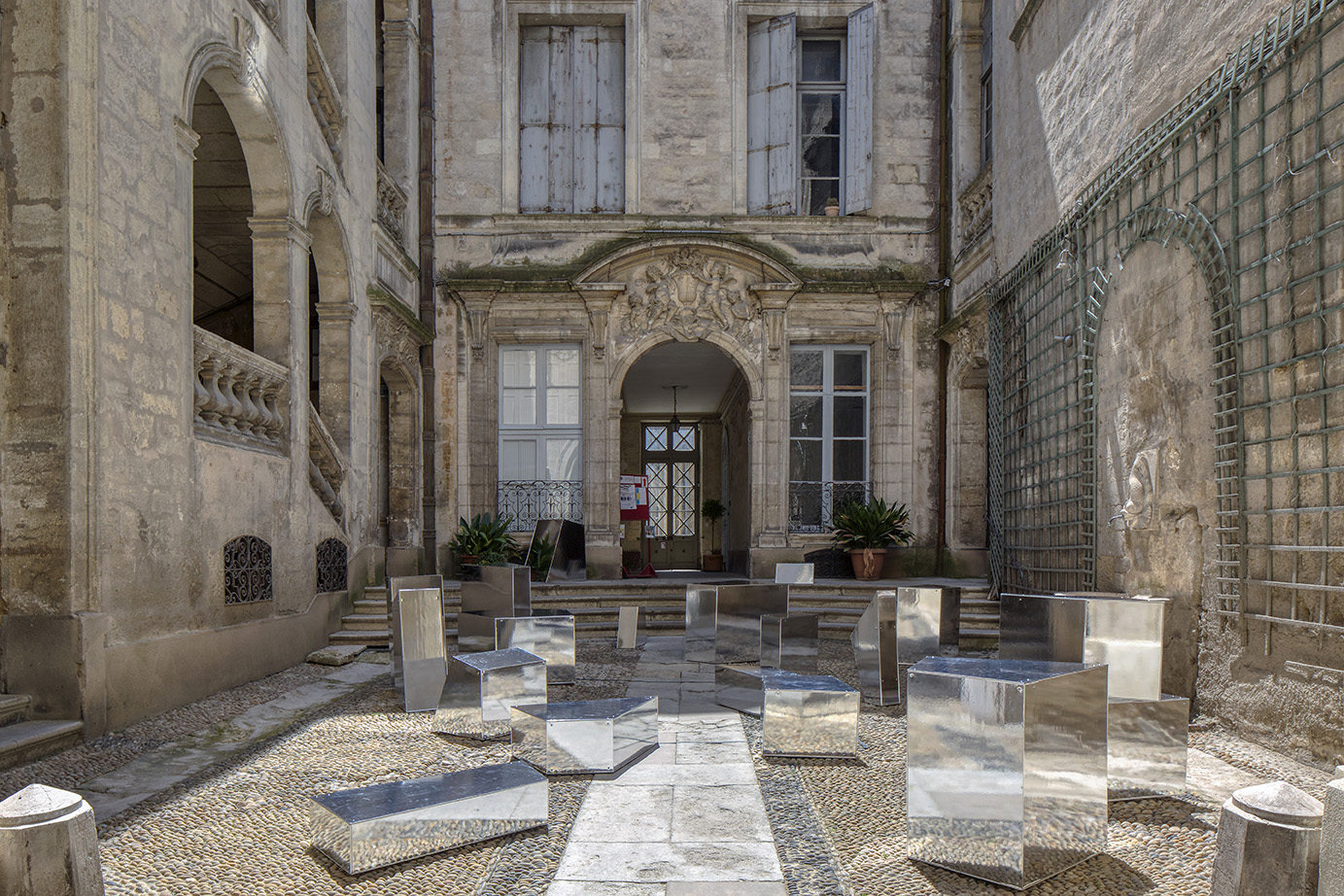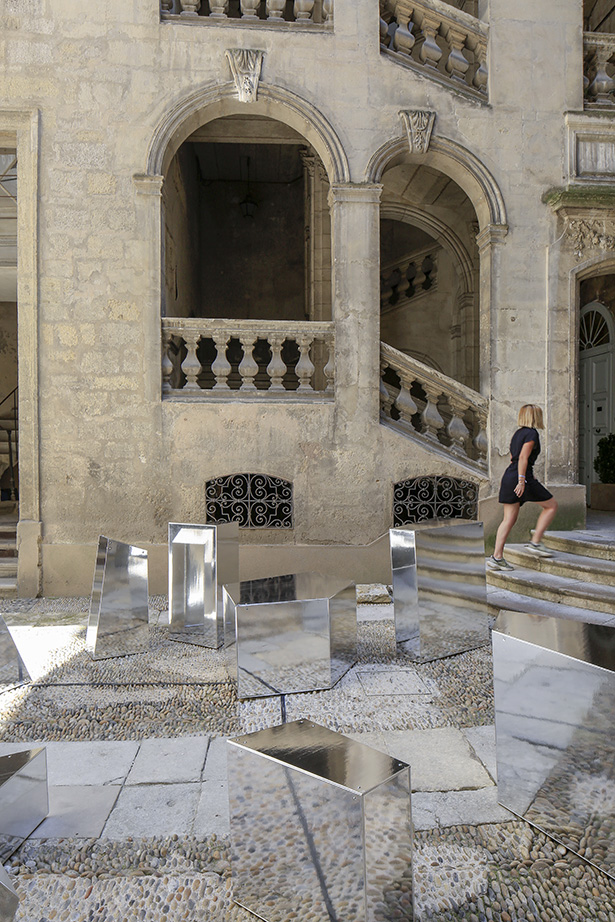FRAGMENT
Vigneri & Chantier
Vigneri & Chantier
Chiara Vigneri & François Chantier
Berlin // Allemagne
Berlin // Allemagne

Chiara Vigneri a étudié l'architecture et l'urbanisme à la FH Potsdam, en Allemagne, et à l'UNINA Federico II de Naples. Elle a renforcé son intérêt pour les villes historiques dans sa thèse de master dans laquelle elle analyse le centre historique de Naples. Dans le cadre d'une étude sur la conservation des monuments, elle travaille sur une situation urbaine complexe sur le thème des strates temporelles. Elle commence ensuite à travailler au sein du bureau berlinois BASD Architekten, où son intérêt architectural pour les constructions existantes s'est encore renforcé.
François Chantier est un architecte, né à Anzin-Saint-Aubin dans la Pas-de-Calais. Il étudie à l’ENSA Paris Malaquais puis à l’ENSA Paris Val-de-Seine. Après trois années de pratique en France, à Paris puis à Lille, il exerce aujourd’hui à Berlin notamment sur des projets de logements abordables. La perception du visiteur, de l’usager, liée aux matières mises en oeuvre, joue un rôle primordial dans ses projets.
Les deux architectes travaillent ensemble sur plusieurs projets et trouvent des intérêts communs dans des thèmes tels que l'architecture durable, l'importance des matériaux de construction, leur origine et leur utilisation, et le dialogue avec l'existant. Leur objectif est de traduire ces thèmes dans un langage architectural contemporain.
Chiara Vigneri studied architecture and urbanism at the University of Applied Science Potsdam, Germany and at the UNINA Federico II in Naples. She strengthened her interest in historical cities in her master thesis in which she analyzes the historical center of Naples. She worked on a complex urban planning situation on the topic of time layers in a monument preservation project. Afterwards she started to work in the Berlin office BASD Architects, where her architectural interest in existing structures continued to grow.
François Chantier is an architect, born in Anzin-Saint-Aubin in the Pas-de-Calais. He studied at the ENSA Paris Malaquais and then at the ENSA Paris Val-de-Seine. After three years of practice in France, in Paris and Lille, he is now working in Berlin, mainly on affordable housing projects. The perception of the visitor, of the user, linked to the materials used, plays an essential role in his projects.
Together they work on several projects, finding common interests in topics such as sustainable architecture, the importance of building materials, their origin and use, reuse and the dialogue with the existing buildings. They see it as their task and challenge to translate these themes into a contemporary architectural language.


Le wabi-sabi, qui trouve ses origines dans la culture japonaise, peut se définir comme suit: la simplicité, l’éphémère, l’erreur, l’imperfection.
Notre projet tente de traduire ces termes en une installation dialoguant avec l'architecture existante. Le but est de refléter les bâtiments historiques dans des formes géométriques simples, élémentaires, construites avec des matériaux recyclés, réemployés, patinés, abimés, avec des irrégularités et des altérations apparues inexorablement au cours du temps.
Les "fragments" éparpillés dans la cour de manière aléatoire et spontanée, de hauteurs différentes, rappellent un objet cassé, éclaté en mille morceaux, évoquant la fragilité de la matière - comme un morceau de porcelaine qu'on a laissé tomber - et plus largement de toutes les choses du monde : de l'esprit, de la vie, des sociétés humaines, des villes.
En observant de plus près, nous devinons que tous ces éclats proviennent d'un volume plus large, formant un carré en plan, signe d'une époque passée. Un évènement particulier, un accident, a eu lieu.
Nous sommes alors tentés de recoller les morceaux, pour réparer l’objet brisé. Cela rappelle la technique du Kintsugi, aussi d’origine japonaise, qui se traduit par l’usage de l'or pour rejointer les débris de céramique - ou l’art de la récupération, le refus du jetable - et nous pousse à nous interroger sur la perfection moderne, et plus largement sur le matérialisme.
Les reflets irréguliers, imprévisibles, parfois déformés par la matière brute et approximative, marquent, gravent - à la manière d'un kaléidoscope - dans l'esprit du visiteur des parties de l'architecture historique, y produisent un souvenir unique par l'expérience - courte et authentique, éphémère par nature - de la promenade.
La ville abimée, friable, les assemblages et combinaisons de matières, qui portent les traces du temps, se prolongent ainsi dans les pensées et mettent en avant la beauté du vieillissement, faisant prendre conscience au visiteur, un instant, que tout est éphémère.
Wabi-sabi, which has its origins in Japanese culture, can be defined as follows: simplicity, ephemerality, error, imperfection.
Our project attempts to translate these terms into an installation that dialogues with the existing architecture. The goal is to reflect historical buildings in simple, elementary geometric forms, built with recyclable material, reused, patinated, damaged, with irregularities and alterations that have appeared inexorably over time.
The "fragments" scattered in the courtyard in a random and spontaneous way, of different heights, remind us of a broken object, shattered into a thousand pieces, evoking the fragility of Material - like a piece of porcelain that has been dropped - and more broadly of all things in the world: of the spirit, of life, of human societies, of cities.
By observing more closely, we can see that all these fragments come from a larger volume, forming a square in plan, a sign of a past era. A particular event, an accident, took place.
We are then tempted to put the pieces back together, to repair the broken object. This reminds us of the Kintsugi technique, also of Japanese origin, which translates into the use of gold to join the ceramic debris - or the art of recovery, the refusal of the disposable - and pushes us to question ourselves on modern perfection, and more broadly on materialism.
The irregular, unpredictable reflections, sometimes deformed by the rough and approximate material, mark, engrave - in the manner of a kaleidoscope - in the mind of the visitor parts of the historical architecture, produce there a unique memory by experience - short and authentic, ephemeral by nature - of the walk.
The partly ruined, crumbly city, the assemblies and combinations of materials, which bear the traces of time, are thus extended in the thoughts and highlight the beauty of aging, making the visitor aware, for a moment, that everything is ephemeral.
Notre projet tente de traduire ces termes en une installation dialoguant avec l'architecture existante. Le but est de refléter les bâtiments historiques dans des formes géométriques simples, élémentaires, construites avec des matériaux recyclés, réemployés, patinés, abimés, avec des irrégularités et des altérations apparues inexorablement au cours du temps.
Les "fragments" éparpillés dans la cour de manière aléatoire et spontanée, de hauteurs différentes, rappellent un objet cassé, éclaté en mille morceaux, évoquant la fragilité de la matière - comme un morceau de porcelaine qu'on a laissé tomber - et plus largement de toutes les choses du monde : de l'esprit, de la vie, des sociétés humaines, des villes.
En observant de plus près, nous devinons que tous ces éclats proviennent d'un volume plus large, formant un carré en plan, signe d'une époque passée. Un évènement particulier, un accident, a eu lieu.
Nous sommes alors tentés de recoller les morceaux, pour réparer l’objet brisé. Cela rappelle la technique du Kintsugi, aussi d’origine japonaise, qui se traduit par l’usage de l'or pour rejointer les débris de céramique - ou l’art de la récupération, le refus du jetable - et nous pousse à nous interroger sur la perfection moderne, et plus largement sur le matérialisme.
Les reflets irréguliers, imprévisibles, parfois déformés par la matière brute et approximative, marquent, gravent - à la manière d'un kaléidoscope - dans l'esprit du visiteur des parties de l'architecture historique, y produisent un souvenir unique par l'expérience - courte et authentique, éphémère par nature - de la promenade.
La ville abimée, friable, les assemblages et combinaisons de matières, qui portent les traces du temps, se prolongent ainsi dans les pensées et mettent en avant la beauté du vieillissement, faisant prendre conscience au visiteur, un instant, que tout est éphémère.
Wabi-sabi, which has its origins in Japanese culture, can be defined as follows: simplicity, ephemerality, error, imperfection.
Our project attempts to translate these terms into an installation that dialogues with the existing architecture. The goal is to reflect historical buildings in simple, elementary geometric forms, built with recyclable material, reused, patinated, damaged, with irregularities and alterations that have appeared inexorably over time.
The "fragments" scattered in the courtyard in a random and spontaneous way, of different heights, remind us of a broken object, shattered into a thousand pieces, evoking the fragility of Material - like a piece of porcelain that has been dropped - and more broadly of all things in the world: of the spirit, of life, of human societies, of cities.
By observing more closely, we can see that all these fragments come from a larger volume, forming a square in plan, a sign of a past era. A particular event, an accident, took place.
We are then tempted to put the pieces back together, to repair the broken object. This reminds us of the Kintsugi technique, also of Japanese origin, which translates into the use of gold to join the ceramic debris - or the art of recovery, the refusal of the disposable - and pushes us to question ourselves on modern perfection, and more broadly on materialism.
The irregular, unpredictable reflections, sometimes deformed by the rough and approximate material, mark, engrave - in the manner of a kaleidoscope - in the mind of the visitor parts of the historical architecture, produce there a unique memory by experience - short and authentic, ephemeral by nature - of the walk.
The partly ruined, crumbly city, the assemblies and combinations of materials, which bear the traces of time, are thus extended in the thoughts and highlight the beauty of aging, making the visitor aware, for a moment, that everything is ephemeral.




©photoarchitecture
